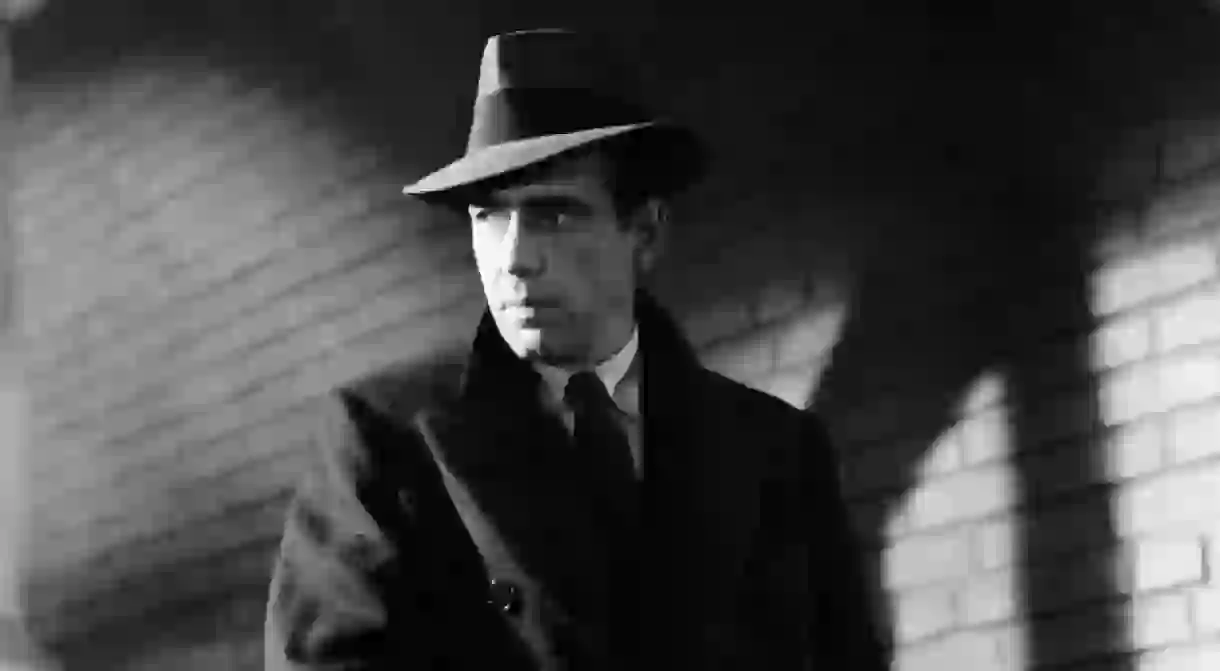A Very Brief History Of Film Noir

Down the mean streets of film noir walk hardboiled detectives, slinky femme fatales, and all manner of corrupt and brutal criminals. What follows is an introduction to the genre of dark American thrillers that mirrored the urban malaise and social anxieties of the 1940s and 1950s.
French critics assigned the term film noir in 1946, citing a trending confluence of American film elements – anti-heroic characters, biting dialog shot from the hip, and bold visual design. The exact parameters of film noir are still up for debate – some argue that true noir films were made during a specific period, the post-World War II 1940s to around 1958, labeling films made before and after proto- and neo-noir respectively, while others argue film noir is more of a style or mood than a genre.

Film noir emerged during World War II when German émigrés like Fritz Lang (M) brought the experimental sensibility of German Expressionist cinema to Tinseltown. Directors utilized high key cinematography that dominantly featured bright direct light and cascading shadow, off-kilter camera angles, and asymmetrical compositions to emphasize spooky or sordid storylines meant to thrill and intrigue.
Contemporaneously, hardboiled detective novels were having a heyday stateside with the emergence of pulp fiction writers like Dashiell Hammett (The Maltese Falcon), James M. Cain (Double Indemnity), and Raymond Chandler (The Big Sleep). It was only a matter of time before noir filmmakers directed their lens toward this befitting merger – crime fiction and psychological thriller storylines were well coupled with the moody aesthetic elements gaining popularity in cinema.

The height of the classic noir period was the simultaneous pinnacle of propriety in media. Hollywood leaders, fearing the “monkey see, monkey do” potential of cinema, erected the Motion Picture Production Code in 1930 to ensure films didn’t endorse immoral behavior. During its reign, adherence to the code’s moral censors could make or break a film’s popularity by severely limiting its distribution.
As a result, noir films of the 1940s portray the seedier sides of life while notably excluding graphic violence, lustful kissing, or even showing men and women sleeping in the same bed. While many of these films feature adultery, their kisses are more like quick clashes than lingering, amorous gestures, and the adulterers rarely enjoy their affairs before being offed in the end. Murders are shot suggestively rather than explicitly – in Billy Wilder’s Double Indemnity, for example, Barbara Stanwyck’s stone-cold stoicism is all the viewer sees as her character’s husband is choked to death in the car passenger seat beside her.

Pressured by television culture and successful foreign films with more lenient standards, the code’s puritanical grip on Hollywood began to loosen, reflected in films like the morally ambiguous noir Fallen Angel (1945) and Anatomy of a Murder (1959), which deals with murder and rape – both films were directed by Otto Preminger, whose pushing of boundaries significantly influenced the genre. In 1952, the U.S. Supreme Court ruled that film is protected under the First Amendment, and in 1968, the Production Code was thrown out in lieu of the MPAA film rating system.

Meanwhile, the private eye trope waned, and trends like science-fiction noir surfaced in the early ‘60s and ‘70s with films like Jean-Luc Godard’s Alphaville (1965)and Richard Fleischer’s Soylent Green (1973).
Film noir elements have found their way into modern classics like Roman Polanski’s Chinatown (1974) and Ridley Scott’s Blade Runner (1982). Christopher Nolan’s Memento (2000), Robert Rodriguez’s Sin City (2005), and Nicolas Winding Refn’s Drive (2011) are some of the recent high-profile titles that pay homage to the genre.
All in all, film noir has left an indelible mark on the medium, and its compelling characteristics will continue to influence cinema well into the future.













